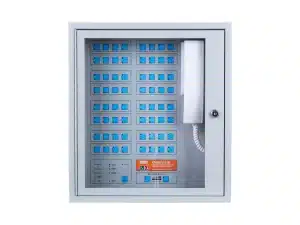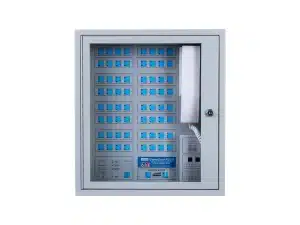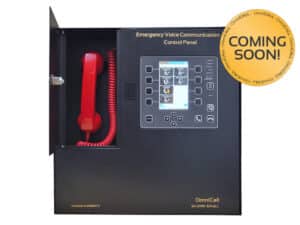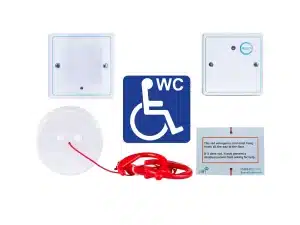Disabled refuge systems play a crucial role in ensuring the safety of individuals in various locations. In this guide, we’ll provide a clear overview of disabled refuge systems, their components, and their importance.
Disabled Refuge Units: Connecting for Safety
Disabled refuge units, also known as ‘remotes’ or ‘outstations,’ are integral to Emergency Voice Communication (EVC) systems. Typically found in designated ‘disabled refuge areas,’ these units facilitate hands-free, two-way communication between occupants in these areas and personnel at the control panel. This communication is vital during emergencies, such as fires, when building evacuation is necessary.
Who Benefits from Disabled Refuge Units?
Disabled refuge units serve anyone requiring assistance during evacuation, including physically impaired individuals, wheelchair users, pregnant women, and anyone needing help exiting a building safely. Using these units, individuals in refuge areas can communicate directly with evacuation personnel, receiving reassurance, real-time updates, and confirmation of assistance.
Refuge Areas: Safe Waiting Zones
A ‘refuge area’ is a designated location where individuals can wait for help during building evacuations. These areas must adhere to specific guidelines outlined in British Standard BS5839-9:2021. These guidelines cover aspects like size, placement, and type to ensure they are fit for purpose and provide safety during emergencies.
The Role of EVC Systems
An EVC system is a monitored, battery-backed solution designed for use during building evacuations in an emergency. It incorporates different types of outstations, including disabled refuge units, fire telephones, steward telephones, and disabled toilet alarms. These outstations offer various methods of communication with the operator at the control panel.
The Control Panel: Managing Communication
The control panel is equipped with a telephone-style handset and an operation interface (e.g., buttons or a dial). It is used by building managers or other responsible individuals, such as fire officers. Operators can communicate with users of outstations within the system, ensuring effective coordination during evacuations.
Disabled Refuge Systems: Key to Building Safety
Disabled refuge systems, with their components like disabled refuge units and control panels, are vital for enhancing safety during building evacuations. These systems provide a lifeline of communication, ensuring individuals in Refuge Areas receive the help they need in the event of an emergency.
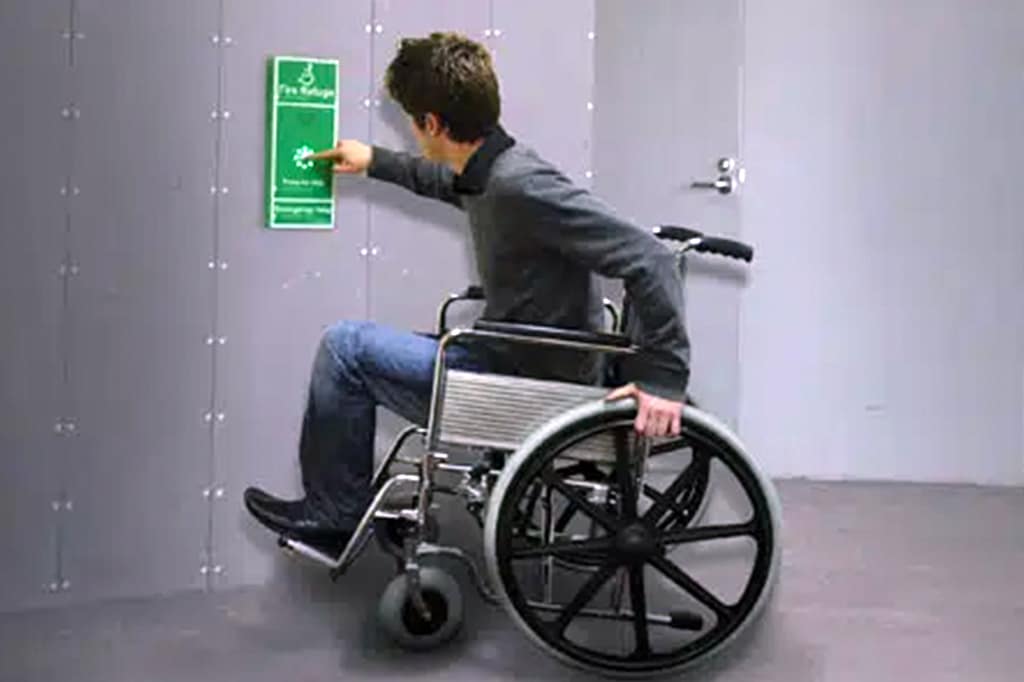
EVC Intended Use
An Emergency Voice Communication System is intended for use by:
- Building or Complex Management - During the initial evacuation process, EVC systems assist building management in coordinating evacuation efforts and ensuring the safety of occupants.
- Fire & Emergency Services - EVC systems support the fire service during the evacuation process and provide ongoing communication after evacuation, facilitating effective response and minimising risks.
- Disabled/Physically Impaired Individuals - EVC systems prioritise the needs of disabled or physically impaired individuals, offering them a means of communication and assistance during emergencies.
In conclusion, an Emergency Voice Communication or EVC system plays a crucial role in enabling reliable communication among emergency personnel, occupants, and individuals with disabilities.
By implementing an EVC system, buildings can enhance safety measures, adhere to standards and regulations, and ensure effective communication during critical situations.
Save & Compliant

BS5839-9 is a code of practice for those who install, maintain and commission EVC systems, giving guidance on how to install an effective system as part of a fire detection and alarm system covering all components including wireless.

BS8300-2 is a BSI Standards Publication code of practice providing guidance on inclusive and accessible design of buildings and the spaces within them to ensure an accessible and inclusive environment.

BS9999 is a BSI Standards Publication providing guidance for fire safety in the design, management and use of buildings. It includes the provision of evacuation methods and placement of EVC systems.
Looking for something?
Search our full database of downloads and documentation
Emergency Voice Communication
OmniCarePLUS makes it possible to install especially large Disabled Refuge/Fire Telephone Emergency Voice Communication (EVC) systems with up to 2,048 outstations on a single loop-wired system.
Emergency Assistance Products
Emergency Assistance Alarm kit for our DTA4 control panel and OmniCare & CARE2 EVC systems. Available in white or brushed stainless steel finishes. 3-part kit with adhesive WC sign.
Single-way, stand-alone toilet alarm kit. Available in white or brushed stainless steel. The 4-part kit includes control panel, over-door light, pull cord, reset switch and adhesive WC sign.









